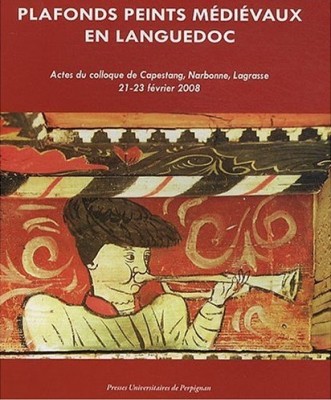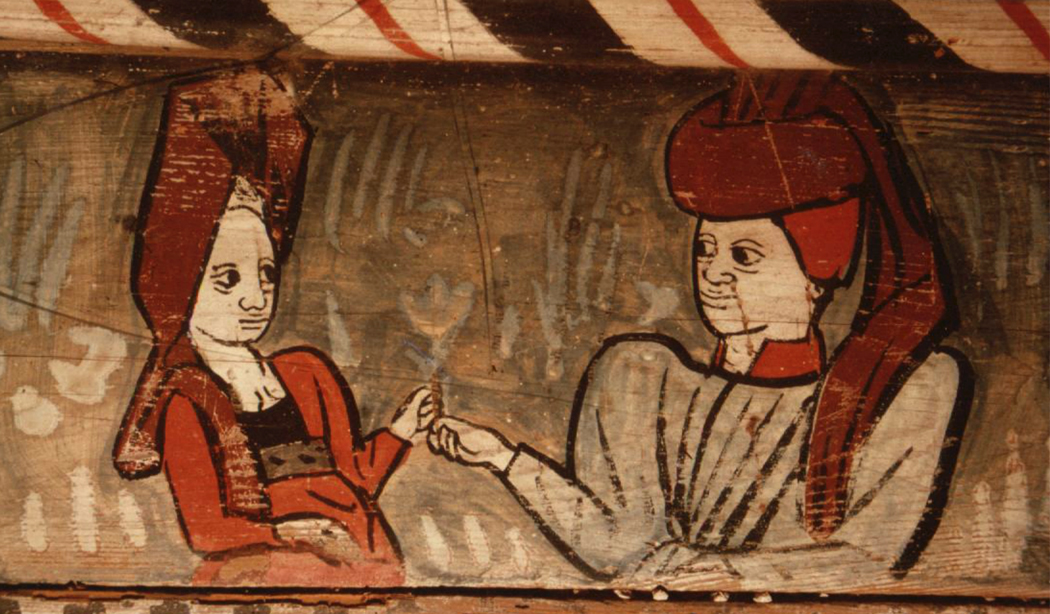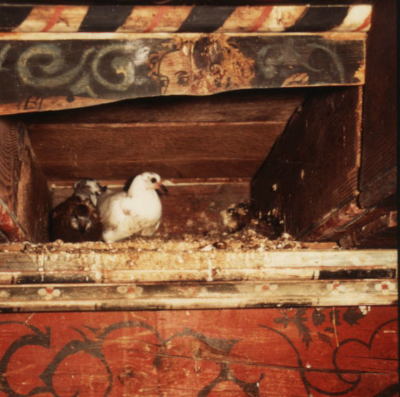Painted ceilings became all the fashion in the later Middle Ages in Le Midi reaching from Catalonia to Northern Italy
In the later Middle Ages in Le Midi it became fashionable to lower the ceilings of the great halls in palaces by installing wooden ceilings constructed with wooden beams. Usually these beams were painted in glorious colours. Often the top of the wall was at the same time painted with a frieze – as in Palazzo Davanzati in Florence – or painted wooden boards were installed as part of the decoration, as in the Stag Room in the Papal Palace in Avignon – .
However, these examples represent no more than a gentle sounding board for the real treasures still found in public and private medieval houses in Le Midi (and further North). For more than a decade a group of dedicated art historians, archaeologists, architects and conservators /have worked to uncover and present this iconographic heritage, which gives an extremely important glimpse into the daily life of merchants, prelates and craftsmen from the 14th and especially 15th century.
One challenge here is that the ceilings are to be found in private homes. Many are not even known to the owners themselves as the painted celings still live a hidden life behind the white or stuccoed ceilings installed when that became fashionable. A third challenge is that French Law does not protect any old medieval house nor these precious pieces of art. Owners have been known to simply pry the painted boards from the ceilings and sell them on Ebay. Accordingly much work remains to be done, as is shown be a preliminary overview, which was published in 2011. Here 28 locations are presented in detail accompanied by sumptuous photos. The generosity of the group of academics should be complimented!
One of the places, where the public may fully enjoy the vibrant colours and funny vignettes is in the archiepiscopal palace in Capastang near Narbonne. Another place is the small village, Lagrasse, where the group has its organisational headquarters and where an exhibition recently opened in the ancient presbytery, telling the story of the painted ceilings. A third place is the La Maison des Chevaliers de Pont-Saint-Esprit in Nimes, where it is also possible to get a feeling for the late-medieval elite contexts of these painted treasures.
At the same time a new video has been released by the CNRS in Paris, which tells the story in detail about some recently uncovered wooden paintings in Lagrasse and elsewhere.
READ MORE:
 The main introduction to the “Plafonds peints médiévaux” – the medieval painted ceilings – can be found in a publication from 2011, which may be downloaded from the website of RCPPM or requested by post from DRAC du Languedoc-Roussillon (5 rue de la Salle L’évêque, Montpellier) or from “RCPPM: plafondspeints@sfr.fr (Post will be charged):
The main introduction to the “Plafonds peints médiévaux” – the medieval painted ceilings – can be found in a publication from 2011, which may be downloaded from the website of RCPPM or requested by post from DRAC du Languedoc-Roussillon (5 rue de la Salle L’évêque, Montpellier) or from “RCPPM: plafondspeints@sfr.fr (Post will be charged):
Images oubliées du Moyen Age. Les plafonds peints du Languedoc-Roussillon
Montpellier, DRAC, 2011
Another publication of interest may also be downloaded from the website:
Plafonds peints médiévaux en Languedoc, Actes du colloques de Capestang, Narbonne, Lagrasse, 21-23 février 2008
Études réunies par Monique Bourin et Philippe Bernardi.
Presses Universitaires de Perpignan, Perpignan, 2009, 249 p, 110 illustrations.
WEBSITE:
Association international de Recherche sur le Charpentes et les Plafonds Peints Médiévaux
SEE MORE
Les Maisons Aux Images. Un film de Claude Delhaye, produit par CNRS 2014
VISIT:
Medieval Painted Ceiling La Maison des Chevaliers de Pont-Saint-Esprit

